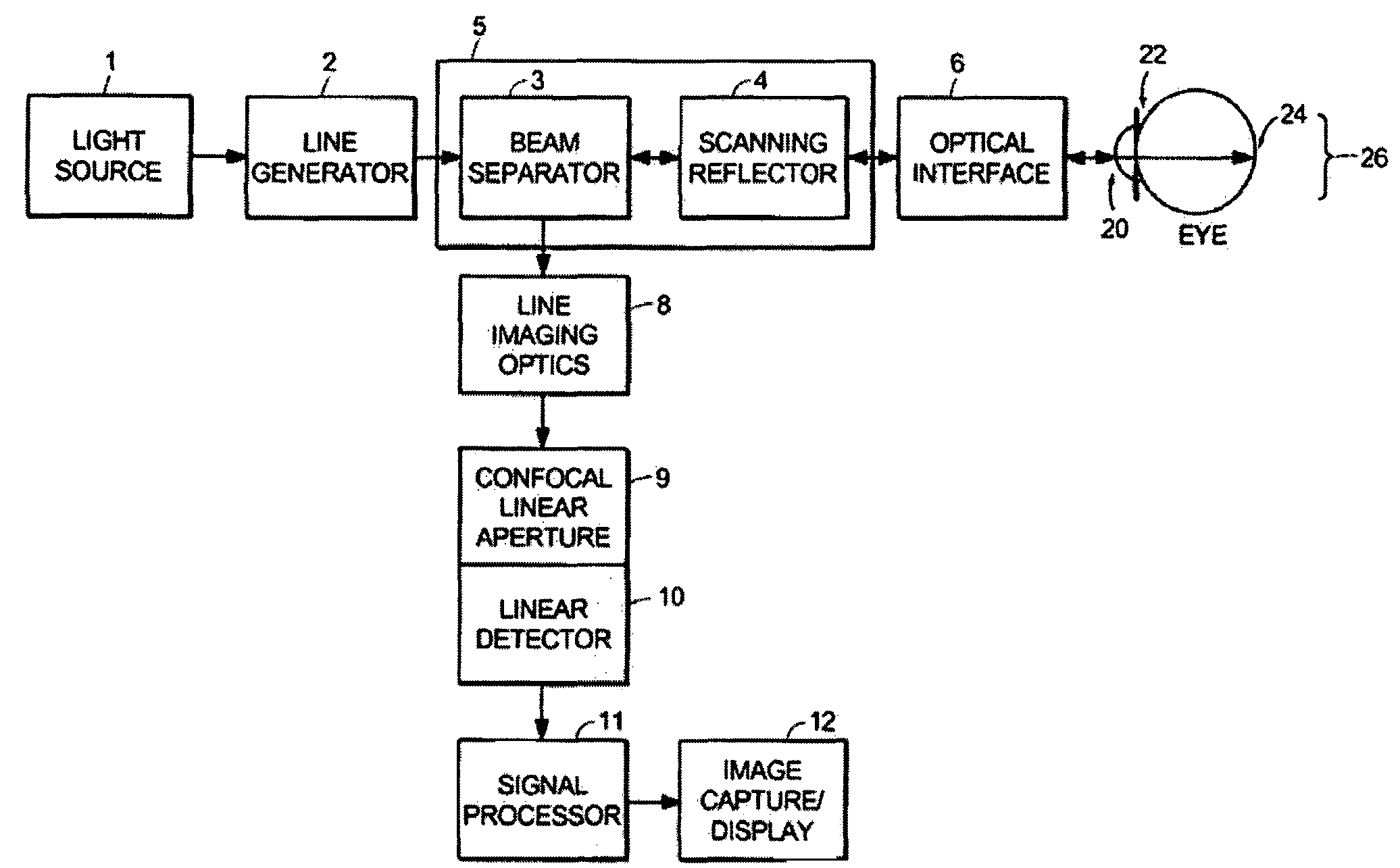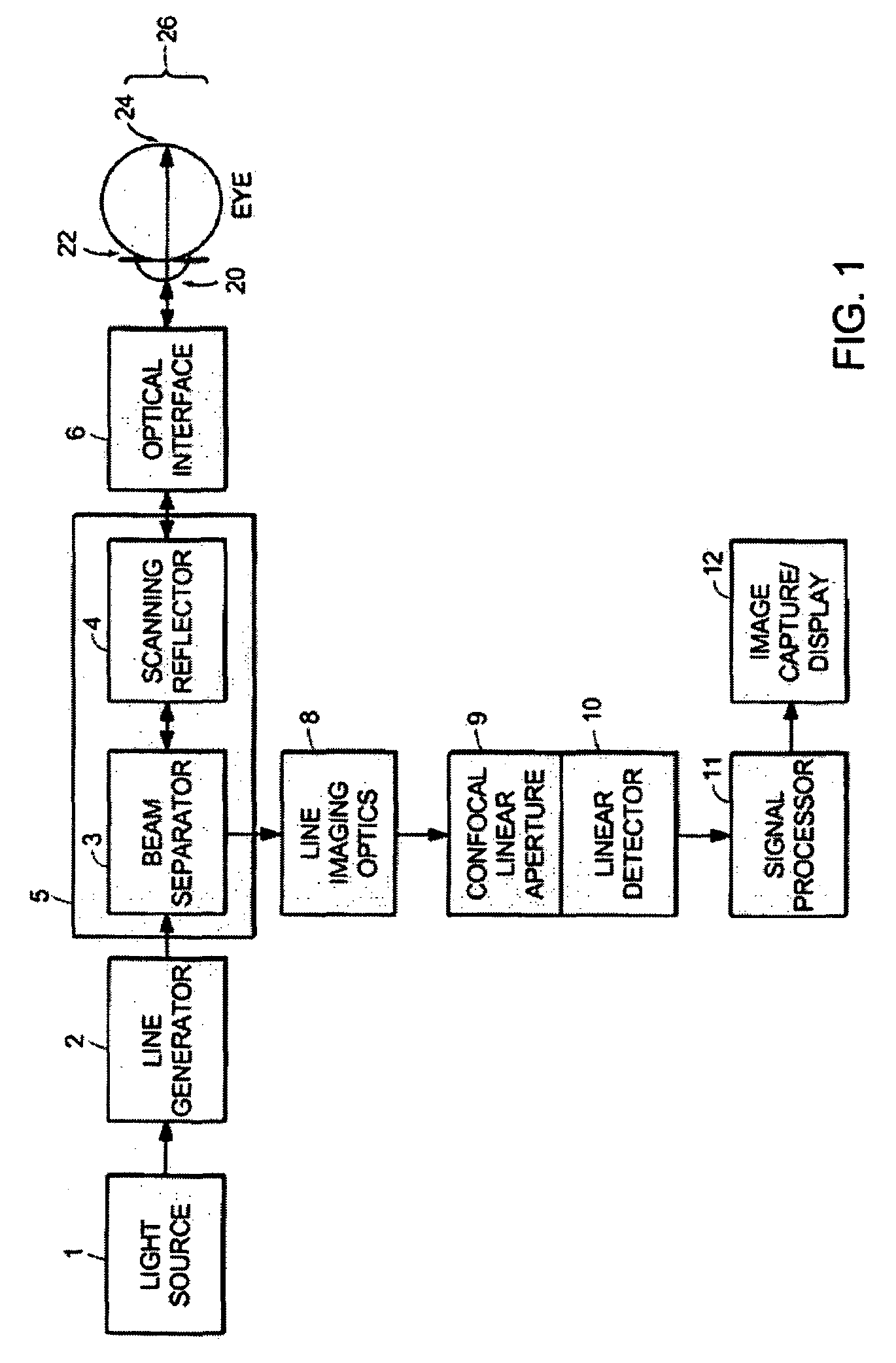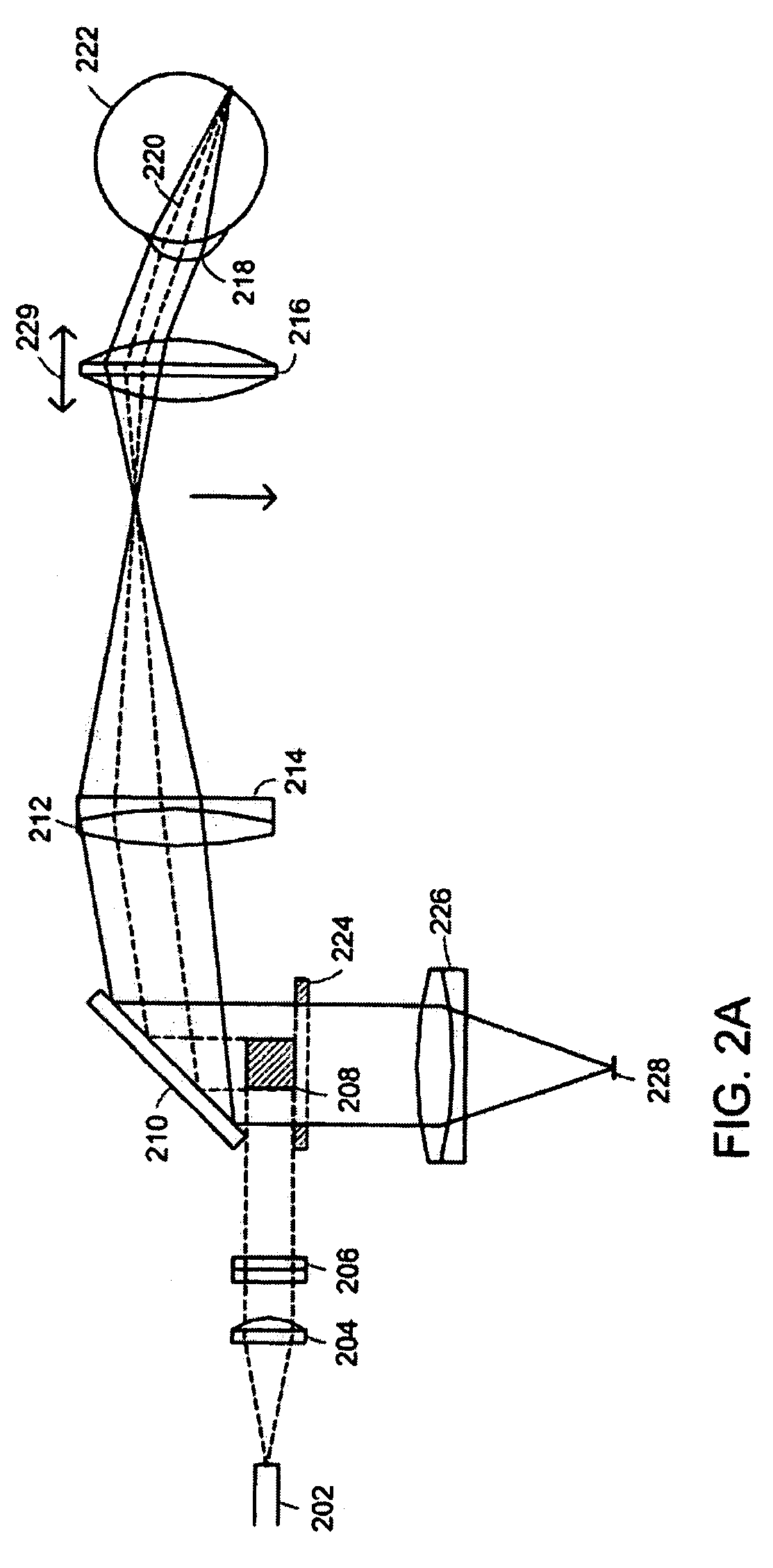Monitoring blood flow in the retina using a line-scanning laser ophthalmoscope
a laser ophthalmoscope and retinal blood flow technology, applied in the field of system and method of eye examination, can solve the problems of ischemic injury susceptibility, dimensions and flow parameters, fewer quantitatively, and few methods that can achieve dynamic blood flow imaging non-invasively (i.e., without dyes), and achieve the effect of high speed and efficient rejection of stray ligh
- Summary
- Abstract
- Description
- Claims
- Application Information
AI Technical Summary
Benefits of technology
Problems solved by technology
Method used
Image
Examples
Embodiment Construction
[0052]A line-scanning laser ophthalmoscope (LSLO) of the invention can have significant confocal advantages in image clarity and contrast and depth of penetration at the ocular fundus as compared with conventional digital fundus photography. A hand-held digital LSLO can capture high quality, non-mydriatic (e.g., undilated pupil), line-confocal retinal images; and stereo pairs can be obtained with a simple, compact design with fewer moving parts and components than prior SLO systems. In one embodiment, the system and method can involve a monostatic beam geometry, e.g., the light incoming to the object to be observed and the light collected in reflection from the object pass through the same location in space between the object and the optical component nearest the object. As a result of the monostatic beam geometry, the instrument can be operated with a small, undilated pupil. The instrument remains operative even if the pupil is dilated, however.
[0053]There are many benefits that ac...
PUM
 Login to View More
Login to View More Abstract
Description
Claims
Application Information
 Login to View More
Login to View More - R&D
- Intellectual Property
- Life Sciences
- Materials
- Tech Scout
- Unparalleled Data Quality
- Higher Quality Content
- 60% Fewer Hallucinations
Browse by: Latest US Patents, China's latest patents, Technical Efficacy Thesaurus, Application Domain, Technology Topic, Popular Technical Reports.
© 2025 PatSnap. All rights reserved.Legal|Privacy policy|Modern Slavery Act Transparency Statement|Sitemap|About US| Contact US: help@patsnap.com



